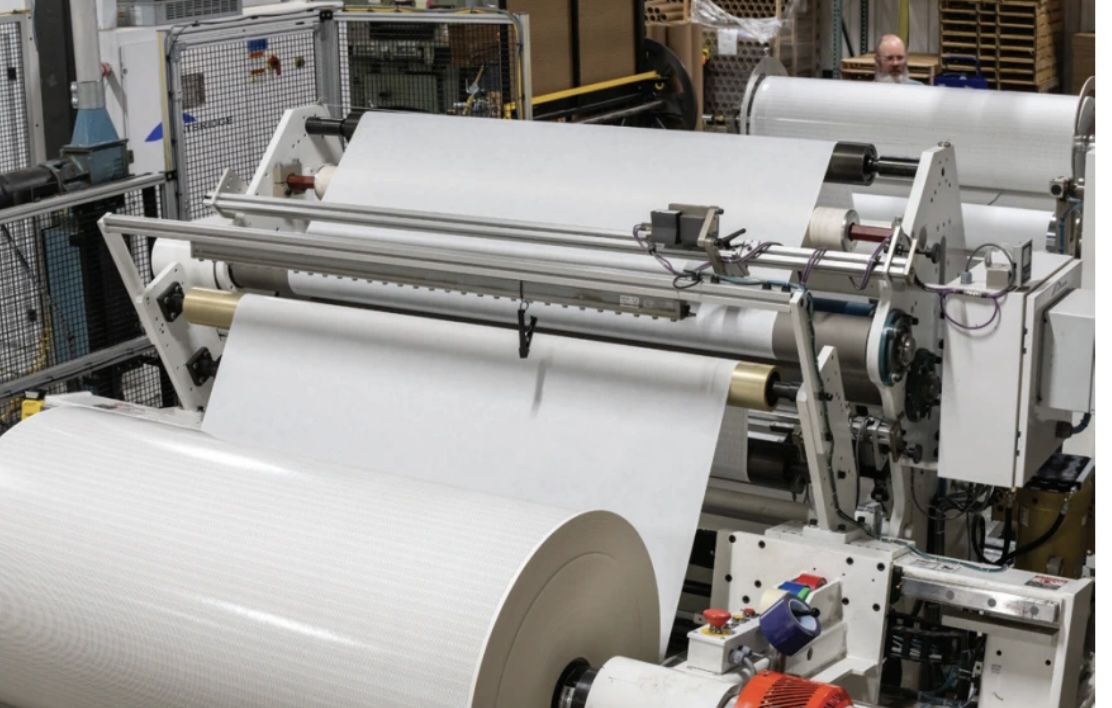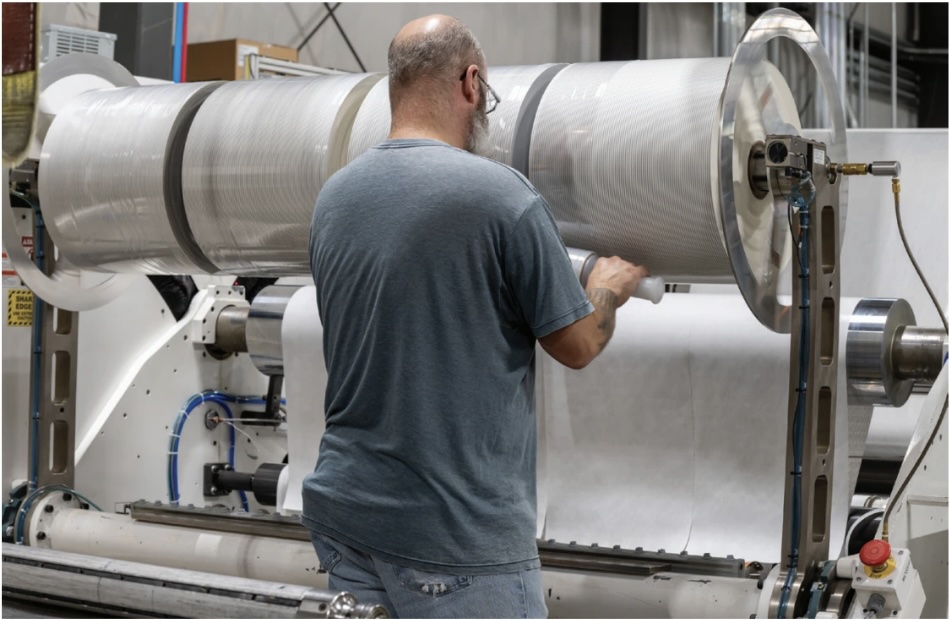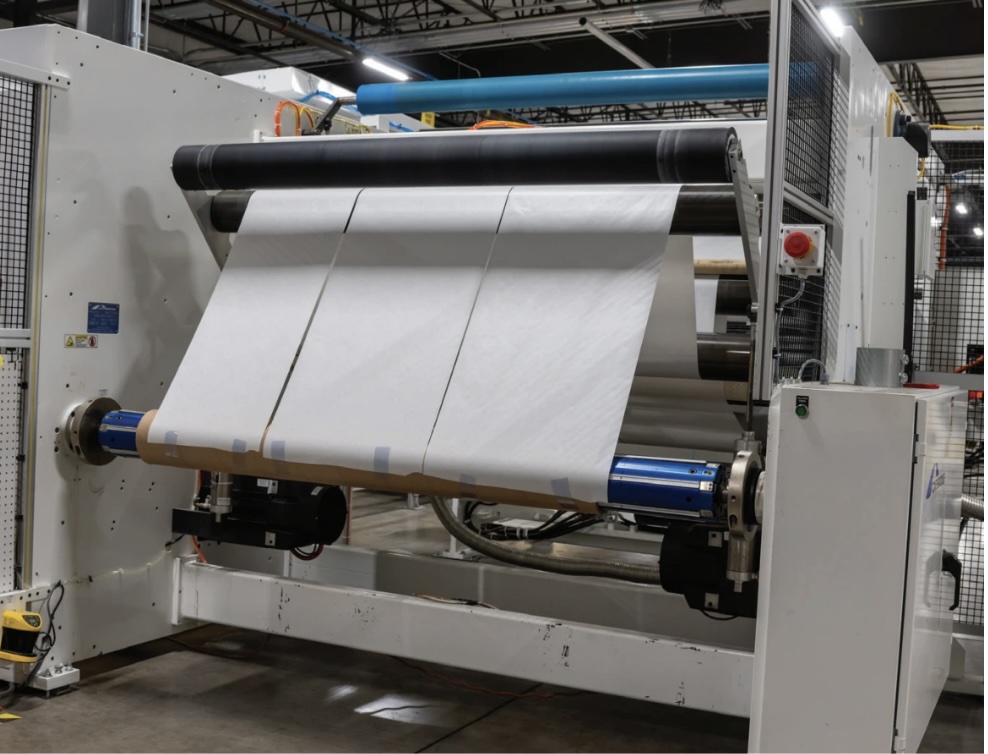Balancing Automation and Human Expertise in Slitting and Rewinding Operations
- Published: May 01, 2025

By Matthew Cain, Director of Manufacturing, Channeled Resources Group (CRG)
Automation has become a driving force in the converting industry, bringing improved precision and efficiency to many operations. However, when it comes to slitting and rewinding, the balance between automation and human expertise remains critical to success. This process, which involves slitting wide rolls of materials like paper, film, or foil into smaller rolls, and then rewinding them, presents unique challenges that cannot be entirely solved by automation alone.
Challenges of Automation in Slitting/Rewinding
One of the main issues with automating the slitting and rewinding process is the inherent variability of materials. Every roll is different — whether due to variations in paper or substrate quality, minor imperfections, or environmental factors like humidity. These variations often lead to inconsistencies in the final wound roll, such as telescoping (when the roll shifts out of alignment) or slippage. While advanced control systems are available to help manage some of these issues, they are not perfect.
In many cases, the coatings being applied are consistent and controlled, but the substrate or material properties themselves can be unpredictable, making it difficult for machines to handle without manual oversight.
The Role of Human Expertise
This is where human expertise becomes invaluable. Experienced operators bring what's often called "tribal knowledge" — the deep, domain-specific understanding passed down through years of hands-on experience. They know how to fine-tune machines in response to subtle changes in material behavior, such as adjusting tension or speed to prevent a roll from becoming unstable. This knowledge is not easily codified into a machine or automation system.
For companies aiming to automate parts of their process, it's essential to capture and systematize this tribal knowledge so that it can be leveraged alongside technology. Documenting processes, training new operators, and encouraging a collaborative environment where team members understand not only what to do but why they are doing it is crucial. This is how businesses can ensure that automation supports, rather than undermines, human expertise.

Investing in the Right Equipment and Training
When automating any part of the slitting or rewinding process, it's vital to invest in the right equipment. This means knowing the range of controls and adjustments the equipment can handle and understanding how these interact with the materials being processed. Equipment alone, however, will not solve all problems. Companies must also invest in their people, training operators to manage both the equipment and the production process efficiently.
Operator training should emphasize process documentation and team coordination. Each operator needs to understand their role in the workflow and how their actions contribute to minimizing downtime and improving overall productivity. A well-trained team can significantly enhance machine uptime by effectively managing changeovers, maintenance, and adjustments between runs-much like a pit crew in a race car team.
KPIs and Continuous Improvement
Tracking key performance indicators (KPIs) is another essential element in ensuring both human and machine productivity. By understanding how a machine is running and correlating this data with operator actions, businesses can pinpoint areas for improvement. For instance, if frequent downtimes are related to material inconsistencies, operators may be able to adjust processes to minimize these effects.
While automation holds promise for increasing efficiency in slitting and rewinding operations, it cannot fully replace the expertise of experienced operators. The key to maximizing productivity lies in a balanced approach that combines advanced technology with the ongoing development of human expertise. This synergy between automation and human knowledge will drive the converting industry forward, ensuring that operations remain both efficient and adaptable to the challenges of the future.

About the Author
Matt Cain is an experienced leader in coating and converting operations with over 20 years in the industry. He oversees operations at Channeled Resources Group (CRG), where he combines his deep expertise in process management with a passion for integrating technology to enhance human performance. His background in IT, focused on optimizing information systems for business efficiency and decision-making, gives him a unique perspective on how technology and machinery can unlock human potential and drive operational success. CRG redefines the custom release liner experience by delivering tailored solutions that address unique customer challenges.




